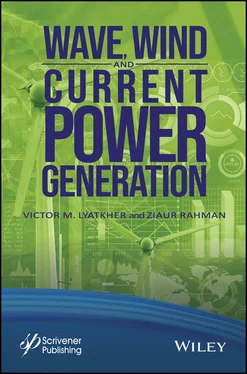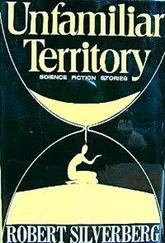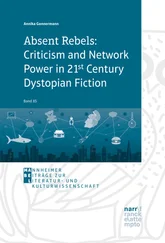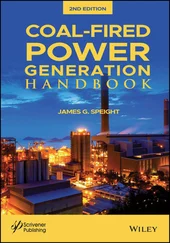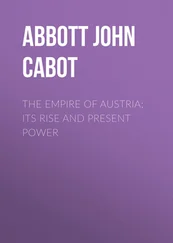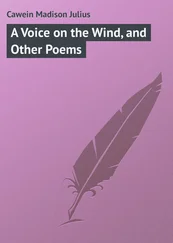Victor M. Lyatkher - Wave, Wind, and Current Power Generation
Здесь есть возможность читать онлайн «Victor M. Lyatkher - Wave, Wind, and Current Power Generation» — ознакомительный отрывок электронной книги совершенно бесплатно, а после прочтения отрывка купить полную версию. В некоторых случаях можно слушать аудио, скачать через торрент в формате fb2 и присутствует краткое содержание. Жанр: unrecognised, на английском языке. Описание произведения, (предисловие) а так же отзывы посетителей доступны на портале библиотеки ЛибКат.
- Название:Wave, Wind, and Current Power Generation
- Автор:
- Жанр:
- Год:неизвестен
- ISBN:нет данных
- Рейтинг книги:4 / 5. Голосов: 1
-
Избранное:Добавить в избранное
- Отзывы:
-
Ваша оценка:
- 80
- 1
- 2
- 3
- 4
- 5
Wave, Wind, and Current Power Generation: краткое содержание, описание и аннотация
Предлагаем к чтению аннотацию, описание, краткое содержание или предисловие (зависит от того, что написал сам автор книги «Wave, Wind, and Current Power Generation»). Если вы не нашли необходимую информацию о книге — напишите в комментариях, мы постараемся отыскать её.
Written by two well-known and respected engineers, this exciting new volume is the most up-to-date and comprehensive text on power generation from waves and water currents available today to engineers, scientists, and students, also covering the latest advances in wind power generation.
Wave, Wind and Current Power Generation:
Wave, Wind, and Current Power Generation — читать онлайн ознакомительный отрывок
Ниже представлен текст книги, разбитый по страницам. Система сохранения места последней прочитанной страницы, позволяет с удобством читать онлайн бесплатно книгу «Wave, Wind, and Current Power Generation», без необходимости каждый раз заново искать на чём Вы остановились. Поставьте закладку, и сможете в любой момент перейти на страницу, на которой закончили чтение.
Интервал:
Закладка:
Table of Contents
1 Cover
2 Title Page
3 Copyright
4 Preface
5 1 Renewable Energy of the World
6 2 Conversion of the Energy of Currents
7 3 Collinear Units and Their Modifications
8 4 Orthogonal Power Units4.1 High Speed Orthogonal Turbines in the Infinite Flow 4.2 Efficiency Turbine with Different Parameters 4.3 One and Two Blades Turbines 4.4 Double-Acting Turbine 4.5 Many Blades Turbines with Large Diameter and Control Position of Blades 4.6 General
9 5 Turbines with Transverse Turbulent Energy Transfer 5.1 Introduction 5.2 Efficiency of Ordinal VAWT – Brake of Flow Within the Aggregate 5.3 New Design with Turbulent Vertical Mixing of Streams 5.4 Conclusion
10 6 Damless Hydropower and Tidal Power Plants
11 7 Tidal Power as Basis for Hydrogen Energetic
12 8 High Jet Power Plant
13 9 Power Unit with a Controlled Thrust Vector – The Base for a Vehicle of Absolute Cross-Country Capability
14 10 High Altitude Turbine (HAT): The Future of Wind Energy
15 Application 1: Development and Adaptation of a Mathematical Model for a Two-Dimensional Calculation of the Flow Around an NACA0021 Airfoil Moving Along a Circular Track*
16 Index
17 Also of Interest
18 End User License Agreement
List of Tables
1 Chapter 1 Table 1.1 Countries where the installed capacity of the wind farm exceeds 1,000 ... Table 1.2 Table 1.3 Table 1.4 Maximum power (kW)/optimal speed (rpm) six-tier a single blade turbine...
2 Chapter 3Table 3.1 The values of the integral J characterizing the relative unit drag.Table 3.2Table 3.3 Maximum values of power factors.Table 3.4Table 3.5Table 3.6Table 3.7Table 3.8
3 Chapter 4Table 4.1 Test results of a single-blade wind turbine in the TsAGI wind tunnel.
4 Chapter 5Table 5.1
5 Chapter 6Table 6.1Table 6.2
List of Illustrations
1 Chapter 1 Fig. 1.1 Charles Brush’s Wind Turbine. Cleveland City, USA, 1888. Fig. 1.2 High-speed wind power unit. 100 kW. Balaclava City, Crimea, USSR, 1931. Fig. 1.3 Hydraulic unit MCT in repair and maintenance position. Devon Coast, 200... Fig. 1.4 Tidal power plant project based on the unit at Hammerfest strom. Fig. 1.5 Layout of damless tidal power plants in England. Fig. 1.6 Anglesey Coastal 11 MW Tidal Power Plant Project with 1.5 MW MCT Turbin... Fig. 1.7 Average annual wind flows over the United States at 50 m above the eart... Fig. 1.8 Distribution of installed wind farm capacity among several US states. Fig. 1.9 Total U.S. Wind Farm Capacity at the End of the Year. Fig. 1.10 One of the first large wind farms in the United States is Tehachapi Pa... Fig. 1.11 A 3 MW floating wind turbine with a rotor diameter of 90 m. Norway, 20... Fig. 1.12 A Vestas modern serial wind turbine. Power capacity: 1800 kW. Fig. 1.13 Relative time of using the installed capacity of the wind turbine of 6... Fig. 1.14 A TMZ serial wind turbine, Moscow (“Raduga” Scientific Production Asso... Fig. 1.15 Energy characteristic of the NEG Micon wind turbine. The rotor diamete... Fig. 1.16 Energy characteristics of the wind turbine of the “Electropribor” Cent... Fig. 1.17 Energy characteristics of a WTIC wind turbine (USA). Fig. 1.18 Orthogonal wind turbines designed according to the Darrieus scheme (19... Fig. 1.19 A 3.8 MW EOLE orthogonal wind turbine at Cap Chat cape on the southern... Fig. 1.20 Wind turbines 6 m (left) and 25 m (right) in diameter with variable ro... Fig. 1.21 Wind turbine in the village of Dubki. The rotor diameter is 4 m. NACA ... Fig. 1.22 A 16-kW wind turbine, the village of Dubki (Chirkeyskaya HPP), 1981. Fig. 1.23 A 130-kW orthogonal wind turbine at the Chormozak pass, Tajikistan, 19... Fig. 1.24 A 1,000-kW wind turbine in the village of Beringovskyi (Magadan Region... Fig. 1.25 Turbine with straight blades in the downstream of the Krasnoyarsk HPP ... Fig. 1.26 Single-blade 6-stage turbine (US Patent 8007235). A 160 mm chord, one ... Fig. 1.27 Optimized single-blade turbine. Fig. 1.28 Optimized two-blades turbine. Fig. 1.29 Turbine lowered into the water discharge channel is fixed in a rigid f... Fig. 1.30 Capacity of turbine with L=5.4 m. with different R for water speed U=1... Fig. 1.31 Three-tiered turbine with two (left) or three (right) lobes in each ti... Fig. 1.32 Spiral-blade turbine. Fig. 1.33 Field of average driving wind speed over the Northern Indian ocean for... Fig. 1.34 Average height of significant waves in the Northern Indian ocean for 2... Fig. 1.35 Plan of St Martin island. Red lines – locations power systems. 1-area ... Fig. 1.36 General view of the power unit for high-altitude jet flow in the assem... Fig. 1.37 Cross-section of the rotor. Support 14 fixes the mutual position of th... Fig. 1.38 The profile of the blade with the flap. 1 - the axis of rotation of th... Fig.1.39 Plan of the blade’s way. Fig. 1.40 Two-tier multi-blade wind turbine with counter-movement of the rotors.... Fig. 1.41 The wind turbine is going on a pontoon in the dry dock and a float is ...Fig. 1.42 Wind speed (m/s) on different height (m).Fig. 1.43 Wave power unit with an underwater orthogonal turbine.Fig. 1.44 Wave heights (m) as function of period T (sec) for different wind spee...Fig. 1.45 Power of straight blade hydro turbines with length L=5.4m, Blades GAW-...Fig.1.46 Imet complex for economical production of pure hydrogen using membrane ...
2 Chapter 2Fig. 2.1 Modern collinear wind turbine. The axis of rotation (1) is parallel to ...Fig. 2.2 Orthogonal high-speed units with an axis of rotation (1) perpendicular ...Fig. 2.3 Flow diagram in the turbine zone.Fig. 2.4 The efficiency of the power unit CP modeled by a flat permeable plate, ...Fig. 2.5 Turbine efficiency vs. “filtration” speed. GGS model.Fig. 2.6 Pressure factor CD = Cp/s according to the original (1) and modified (2...Fig. 2.7 Efficiency and resistance of an orthogonal turbine with a turbine lengt...Fig. 2.8 Pressure factor on a permeable circular disc. 1 – G. Kh. Sabinin’s mode...Fig. 2.9 An example of the energy characteristics of a high-speed wind turbine w...Fig. 2.10 Same as in Figure 2.9, but in the coordinates of wind speed and a powe...Fig. 2.11 Flow diagram of the power unit blade.Fig. 2.12 Factor of pulling force for NACA 00XX profiles with infinite blade len...Fig. 2.13 Factor of normal force for NACA 00XX profiles with infinite blade leng...Fig. 2.14 NACA 0018.Fig. 2.15 NACA 0015.Fig. 2.16 GAW-1.Fig. 2.17 Characteristics of the best orthogonal and collinear aggregates with a...Fig. 2.18 Efficiency of the Sandia two-blade orthogonal turbine. Shading σ from ...Fig. 2.19 Field tests of collinear units with a diameter of 10 m (top) and 91.4 ...Fig. 2.20 Power of a Darrieus type two-blade orthogonal wind turbine depending o...Fig. 2.21 Tests of an orthogonal wind turbine with straight blades performed at ...Fig. 2.22 Power factor CN of orthogonal turbines vs flow rate. Test results: 1 –...Fig. 2.23 Torques on the turbine axis (Nm) as a function of the angle of the bla...Fig. 2.24 Tidal parameters and power of the tidal power plant as a function of c...
3 Chapter 3Fig. 3.1 Design options for collinear power units.Fig. 3.2 Modern low-speed wind turbine (“American”).Fig. 3.3 The torque factor of the unit is shown in Fig. 3.2.Fig. 3.4 Unit efficiency according to Fig. 3.2.Fig. 3.5Fig. 3.6 Efficiency contours of power generating units, CP, with Espero blades (...Fig. 3.7 Flow diagram of the unit.Fig. 3.8 Dependence of the relative pressure drop across the unit vs the relati...Fig. 3.9 Comparison of the results of calculations (lines) and experiments (poin...Fig. 3.10 Influence of the blade airfoil shape on the turbine efficiency, r0 = 0...Fig. 3.11 Influence of the design of two-blade units. The Espero airfoil, φ0 = 2...Fig. 3.12 Distribution of longitudinal (ux=Ux/U0) and radial (ur=Ur/U0) velociti.
Читать дальшеИнтервал:
Закладка:
Похожие книги на «Wave, Wind, and Current Power Generation»
Представляем Вашему вниманию похожие книги на «Wave, Wind, and Current Power Generation» списком для выбора. Мы отобрали схожую по названию и смыслу литературу в надежде предоставить читателям больше вариантов отыскать новые, интересные, ещё непрочитанные произведения.
Обсуждение, отзывы о книге «Wave, Wind, and Current Power Generation» и просто собственные мнения читателей. Оставьте ваши комментарии, напишите, что Вы думаете о произведении, его смысле или главных героях. Укажите что конкретно понравилось, а что нет, и почему Вы так считаете.
